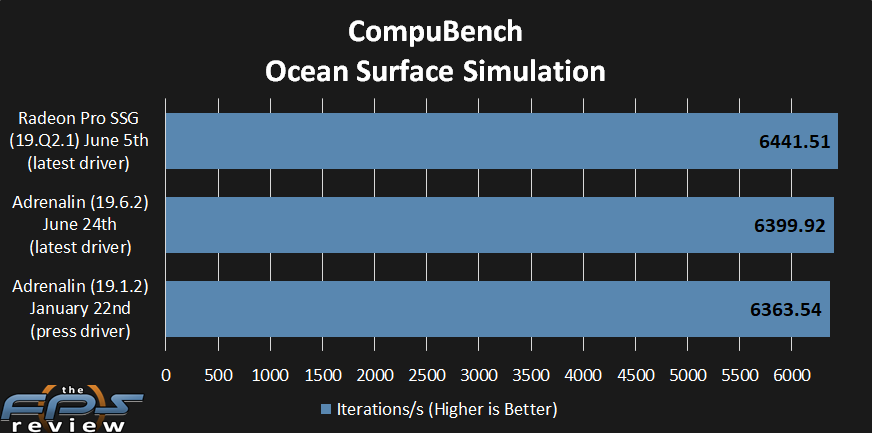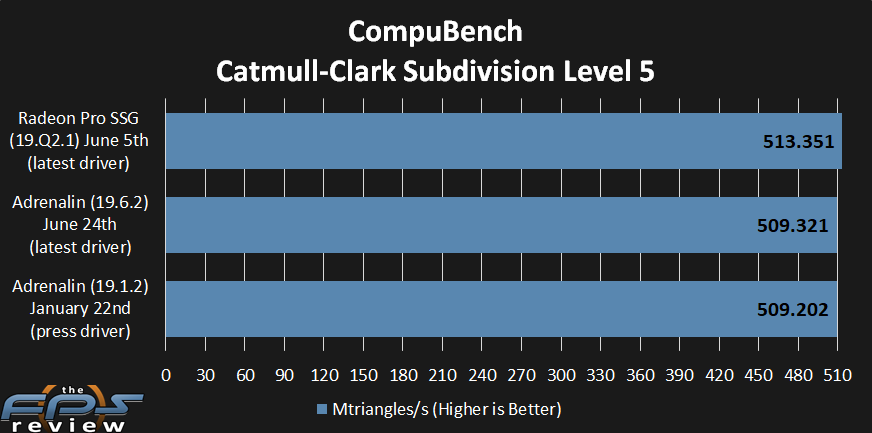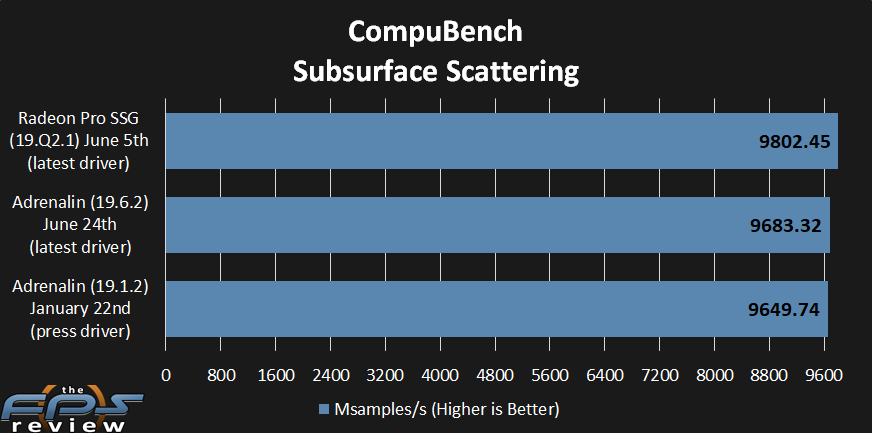CompuBench
We are using the CompuBench version 2.0 suite of compute testing features. This suite of tests are very powerful for testing the heart of compute based performance testing in OpenCL. Before we begin, we did try running the first four tests in the suite: Level Set Simulation and Local Tone Mapping, but these tests caused the program to crash on the Radeon VII. Therefore, we focused on the other tests, but we had to be particular because this suite has a lot of tests in it.

The first test we ran was the Ocean Surface Simulation test. This tests the FFT algorithm based on ocean wave simulation. The Fast Fourier transform computes transformations of time or space to frequency and vice versa. FFTs are widely used in engineering, science and mathematics as the program states. The results are in iterations/s and higher is better.
You can see from the graph that there is a very slight bump in performance with the latest Adrenalin drivers over the press drivers, but not major. However, installing the Radeon Pro drivers actually kick up performance a notch, there’s a definite improvement, not huge, but it’s there.

The next text is the Catmull-Clark Subdivision Level 5 test. This is a method that smooths a 3D polygon mesh surface by dividing the polygons into smaller polygons. The result is triangles per second and higher is better.
There is an actual small improvement with the Radeon Pro drivers, again not major, but a consistent pattern at this point. There is no difference between the press driver and latest release Adrenalin driver.

The next test is the N-Body Simulation 1024K. This calculates gravitational forces between N bodies with the Barnes-Hut algorithm. The result is in iterations a second and higher is better.
The results in this test are about equal between all three drivers. The results are too close to call anyone a real winner, the same performance is generally experienced.

The next test is Vertex Connection and Merging. This is an important global illumination algorithm which combines bidirection path-tracing with photon mapping through multiple importance sampling. The result is mpixels/s and higher is better.
In this test we see a slight improvement with the Radeon Pro driver, but we are talking hundreds of thousands of pixels, not millions in difference. This isn’t a major advantage, but when it comes to path-tracing every little bit helps. There seems to be a clear performance bump from the press driver which was the slowest.

The next test is Subsurface Scattering. This is a widely used technique in games. Subsurface Scattering is a rendering technique used to approximate the common tendency for light to penetrate and scatter beneath the surface of translucent objects.
There is a very slight improvement in the latest Adrenalin driver versus the press driver. However more-so there is a larger bump in performance with the Radeon Pro drivers.

The next test is TV-L1 Optical Flow. This is a test based on dense motion vector calculations using variational method. Optical flow is widely used for video compression and enhancing video quality in applications, or motion detection.
The performance here seems to be very similar across all drivers.
